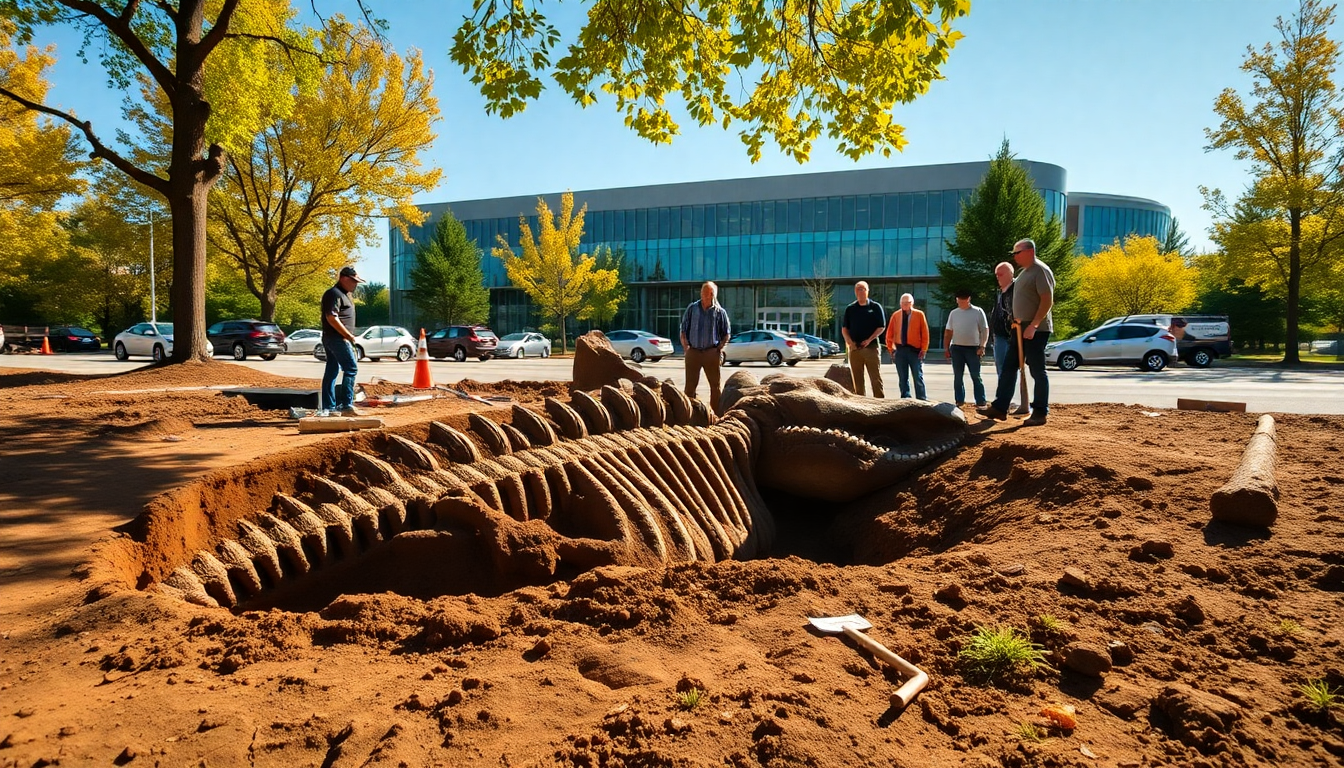Table of Contents
In a surprising twist of fate, the Denver Museum of Nature and Science has stumbled upon a dinosaur fossil hidden beneath its parking lot. This unexpected find, which took place during the museum’s exploration of geothermal heating options, opens a fascinating window into a world that thrived around 67.5 million years ago. The fossil, thought to be a vertebra from a small herbivore, reveals intriguing insights about the prehistoric environment of the region.
Unveiling the Past: The Discovery
James Hagadorn, the museum curator, describes the discovery of a dinosaur bone buried over 750 feet deep as nothing short of extraordinary. He likens this rare achievement to “hitting a hole in one from the moon,” a colorful analogy that truly captures the significance of this find, not just for the museum but for paleontology as a whole. Can you imagine the thrill of uncovering something so ancient and rare?
The fossilized bone was unearthed using a bore just five centimeters wide, which highlights both the precision of the excavation and the sheer luck involved in such a discovery. Alongside the bone, fossilized plant material was also found, hinting that the area was once a rich, swampy habitat buzzing with life.
Hagadorn expressed a wish to excavate the entire dinosaur, jokingly noting the challenges of digging a massive hole in a parking lot. Still, this remarkable find serves as a powerful reminder of the hidden history that lies just beneath our feet.
The Significance of the Find
This discovery stands out, as only two similar finds have been recorded in borehole samples worldwide. It’s a rare event, particularly for a dinosaur museum. Patrick O’Connor, the museum’s curator of vertebrate paleontology, emphasized the importance of this fossil, suggesting it might be Denver’s oldest and deepest paleontological discovery to date. Isn’t it fascinating to think about the history that could be buried right under our cities?
O’Connor also highlighted the ecological context of the dinosaur, pointing out that it thrived in a lush, heavily vegetated swamp. This insight enriches our understanding of the Cretaceous period and the diverse environments that existed at that time.
Thomas Williamson, another paleontologist, noted that while the find may not be the most thrilling from a scientific perspective, it nevertheless offers the public a chance to engage with a piece of history that remained hidden for millions of years. How cool is it to see a tangible link to a time when dinosaurs roamed the Earth?
Broader Implications for Paleontology
The discovery of this dinosaur fossil not only sheds light on Colorado’s rich geological history but also highlights the need for ongoing research and exploration in paleontology. As scientists continue to study the fossil and its surrounding context, they may reveal even more insights into the ecosystem that flourished during the late Cretaceous period.
Just this past January, another noteworthy find surfaced in southern England, where a “dinosaur highway” containing nearly 200 tracks was discovered in a limestone quarry, dating back 166 million years. These discoveries remind us of the intricate web of life that once thrived on our planet and the importance of preserving these findings for future generations.
Ultimately, this unique discovery beneath the Denver Museum of Nature and Science reinforces the idea that right under our cities and towns lie the remnants of our planet’s ancient past, waiting to be uncovered and understood. Isn’t it exciting to think about what else could be hiding just below the surface?


